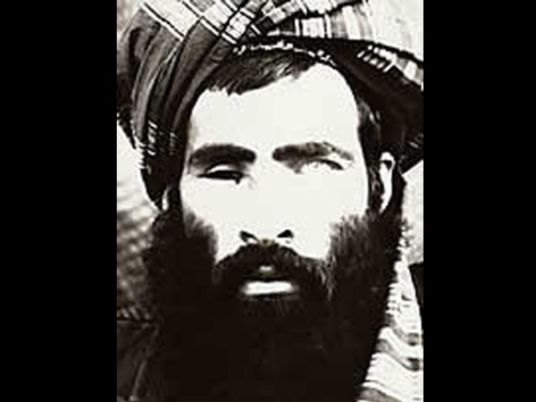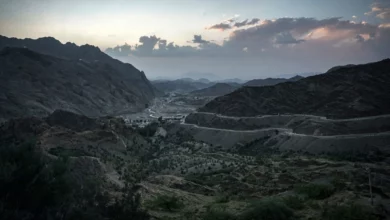
Mullah Mohammed Omar was the definition of elusive. There are two photographs of him in existence, and even they are neither official nor conclusively of him. He had not appeared in public since the Taliban regime's overthrow in Afghanistan 14 years ago and made no video or authenticated audio statements in that time.
In fact, many in the Taliban have not known for years whether he was alive or dead, let alone where he might be. And other militant groups have begun to ask what had become of him.
So little is known about his leadership, so rare his statements (or those attributed to him), that the true impact of his death on the movement he led is hard to gauge. But the Afghan government's announcement Wednesday that he died more than two years ago comes at a difficult time for the Taliban, which face a challenge from ISIS on their home turf. The Taliban must also try to retain the loyalty of younger, more radical elements while exploring the possibility of a peace settlement as the US military presence in Afghanistan shrinks.
Philip Mudd, who was a senior counterterrorism official in both the CIA and FBI in the years after 9/11, described pursuing Omar as "like following a ghost."
Mudd said he believes that for much of the past 15 years, "people in the south (of Afghanistan) have been ensuring that he stay out of the clutches of the Americans."
Other reports have variously put Omar in the Pakistani cities of Quetta and Karachi, where the Taliban had extensive support networks.
But of his importance Mudd has no doubt.
"It's very difficult to find in insurgent organizations leaders with certain characteristics," he told CNN. Omar had "No. 1, respect within the organization, No. 2, the experience to deal with the American invasion, to deal with the civil war in Afghanistan, to deal with the Pakistanis. You can't … build those characteristics overnight."
Even Al-Qaeda appeared to be out of the loop
If, as the Afghan government now says, he died in April 2013 in Pakistan, then the leaders he left behind have gone to great lengths to hide the fact — an indication of his irreplaceable influence. Even Ayman al-Zawahiri, the leader of Al-Qaeda, appears to have been out of the loop: Al-Qaeda restated its pledge of allegiance to the Taliban leader a year ago.
In April, the Taliban published a 5,000-word biography of their leader to prevent "false propaganda by a number of spurious writers, analysts, and some biased circles." And two weeks ago, the Taliban website published a message attributed to Omar in the form of an Eid greeting.
It could be that his stamp of approval (posthumous or not) in that message was useful to those within the Taliban in favor of peace talks.
The message said that despite the departure of US troops it was "still obligatory upon us to continue our sacred Jihad … and restore an Islamic system." But it held the door open to negotiation, saying that "political endeavors and peaceful pathways … are a legitimate Islamic principle" and that contacts "even with the envoys of infidels" were permissible.
There was also a shot across ISIS' bows, calling on the mujahedeen to "forcefully prevent all those elements who attempt to create differences, damage this Jihadi front or try to disperse the (Mujahedeen)."
That message, released July 15, came a month after a letter was published, addressed directly to ISIS leader Abu Bakr al-Baghdadi by the head of the Taliban's Shura Council, Mullah Akhtar Muhammad Mansour (who in the same letter incidentally said the Taliban "is led" by Omar.)
"If any new effort is made to establish separate Jihadi ranks or leadership, then the ground would be paved for sedition as a result of divisions and disputes," Mansour wrote.
ISIS a challenge to Taliban
ISIS has been trying to muscle in on Taliban territory, declaring it part of the "Khorasan Province." In an interview in the most recent edition of the ISIS English-language magazine Dabiq, a Muslim scholar said jihadists in Afghanistan and Pakistan should pledge to the self-declared "caliphate" of al-Baghdadi over the "regional" leader Omar.
This month, the Khorasan Province of ISIS released an audio speech from its leader, Hafiz Saeed Khan, suggesting that Omar was dead and that the Taliban leadership was a tool of Pakistani military intelligence. (That speech was released as media reports surfaced that Khan had been killed in a US drone strike.)
Omar's authority extended to factions of the Pakistani Taliban, which recently rejected the ISIS "caliphate" and instead lauded the Taliban and Al-Qaeda — especially "the command of the Islamic Emirate of Afghanistan led by Emir of the Believers Mullah Mohammed Omar."
There is no obvious successor to Omar with that sort of authority.
Divisions within Taliban
According to some Pakistani analysts, his deputy, Mansour, faces resistance from Omar's eldest son, Mullah Mohammed Yaqoob, and other military commanders. There is also a tribal aspect to these divisions, these analysts say, with some clans resenting the dominance of the Ishakzai Durrani represented by Mansour.
A report Monday in the Pakistani newspaper The News, said that at a recent meeting, "Yaqoob was introduced as the would-be leader of the Taliban movement and Mansour was heavily criticized."
Some indication of how these rivalries are unfolding may emerge when the next round of peace talks between the Taliban and Afghan government occur. They were due to take place this week.
Some analysts argue that confirmation of Omar's death might ultimately free the group from its limbo, and the damaging claims by others that it is rudderless. Not only ISIS but a splinter group of the Taliban — the Fidayee Mahaz — recently claimed he was dead. And the Islamic Movement of Uzbekistan, a significant jihadist group with a long presence in Afghanistan, published a long and scornful commentary on Omar's years of silence, saying "We — a Muslim group — have done a lot of work to find him, yet we were not able to find trace of him."
This uncertainty has only helped to sow divisions within the Taliban, as one faction or another compete to speak in Omar's name and doubts grow about edicts issued in his name. As long ago as 2010, Sami Yousafzai wrote in Newsweek, "Without their faith in Mullah Omar's divinely inspired leadership, the Taliban would almost surely collapse into a welter of rival clans and factions."
If the Taliban at some point acknowledge he has died, the big questions are whether a majority of the group's factions will rally round a successor and whether jihadists in Pakistan — and Al-Qaeda — will pledge allegiance to that successor as leader of the Islamic emirate of Afghanistan.
In 2001, Osama bin Laden said that Omar's authority had been accepted by the "scholars" of Afghanistan and, therefore, "it is the duty of everyone to pledge allegiance to him." Al-Qaeda, pointedly, re-released bin Laden's statement this year, possibly to shore up Omar's authority as ISIS challenged it.
There will be no such stamp of approval next time.
The Taliban remain an effective fighting force, with recent assaults on Kunduz in northern Afghanistan and a bold attack on the Afghan parliament in June. These too may reflect the internal rifts between those who want to explore dialogue and those who prefer to continue fighting.
Perhaps that is part of the Afghan government's calculation. In its statement Wednesday on Omar's death, the government said it "believes that grounds for the Afghan peace talks are more paved now than before, and thus calls on all armed opposition groups to seize the opportunity and join the peace process."
Divining the Taliban's intentions, though, recalls Winston Churchill's description of Russia in 1939: "It is a riddle wrapped in a mystery inside an enigma."




